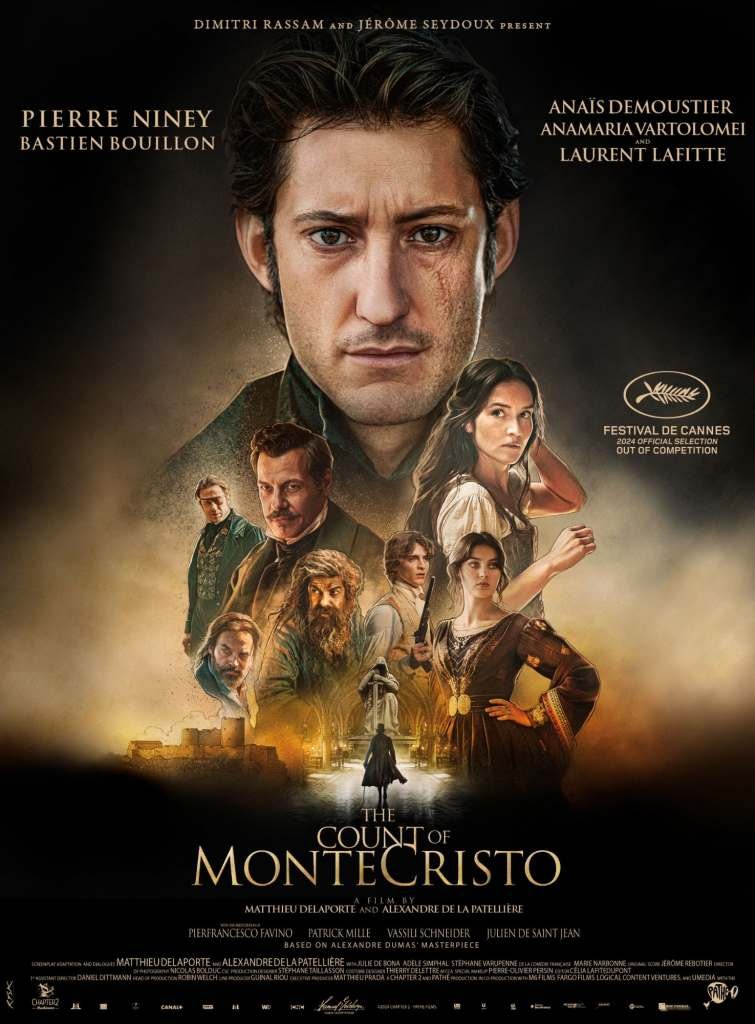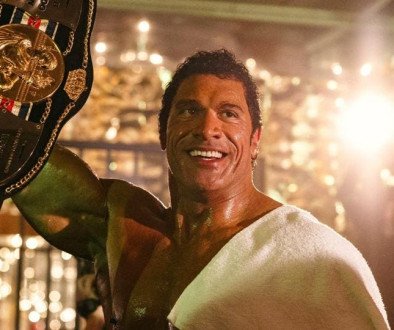THE COUNT OF MONTE CRISTO Review: An Epic And Satisfying Revisit To A Literary Classic
The Count Of Monte Cristo is now playing in theaters across the U.S. from Samuel Goldwyn Films.
The last screen adaptation of famed author Alexandre Dumas’s The Count Of Monte Cristo was 2002’s release from director Kevin Reynolds. To say the least, while I enjoyed the film, it always felt like there was more missing to its treatment for such an epic tale to be told. Would it be a stretch to say that the time our dear protagonist Edmond Dantes spent on an island prison equate to the weight of having to wait as long as the rest of us did for something significant and impressive to come along from the film front? I reckon that it depends on your viewpoint and tastes in film, in general.
Moreover, and personally, I certainly didn’t expect the latest French-language iteration from directing duo Alexandre de la Patellière and Matthieu Delaporte to be a three hour saga, or even as historically expensive a production as it is; I haven’t yet seen their contribution to Martin Bourboulon’s last tête-à-tête, The Three Musketeers, and so to be clear on this, I’m definitely not complaining. While not particularly suited for just anyone’s intake, de la Patellière and Delaporte have achieved something well-studied and intricate in their mapping of Dumas’s 19th-century tale. It also takes a few liberties here and there, while the collective modus operandi is staunchly applied and presented by the filmmakers that embarks viewers on a quest of revenge that is less binary and perfunctory than what two hours could entail.
Indeed, this critique is about more than how the duration of Samuel Goldwyn Films’ latest pending rollout of The Count Of Monte Cristo performs according to its length. Primarily, what’s important is how the filmmakers accomplish the arduous task of adapting one of the most famous stories ever written, and for a prolific genre that is commonly attended by creators, entertainers and fans alike. Anyone who is everyone who has seen action films, period dramas, suspenseful and storied tales of woe where heroes give villains their just due, loves a good revenge story. However, the moral and spiritual impasse central to the narrative is what’s most at stake. The filmmakers make good and well clear at making sure this aspect of the story sticks, as does the film’s setting – a time of upheaval and distrust when Bonapartism was a threat to the French government.
Such were the paranoia and machinations of treachery that befell young merchant sailor Edmond Dantes (Pierre Niney) later on in the story, long after rescuing a woman from a shipwreck against the orders of Captain Danglars (Patrick Mille). Dantes is commended by his employer with a promotion, replacing the bitter Danglars as Captain of the vessel, The Pharoah, and as if things couldn’t get better, Dantes’s marriage prospects are now on the horizon as he looks to wed the love of his life, Mercédès (Anaïs Demoustier), backed by the blessing of his best friend, Fernand de Morcerf (Bastien Boullion).
Little does Dantes know that his happiness would be both short-lived and stolen from when he is wrongfully suspected of being a traitor to France, mullered by the trifecta of ill-willed parties comprised of Danglars, de Morcerf, and prosecutor Gérard de Villefort (Laurent Lafitte). Imprisoned at Château d’If for four years, a chance meeting with fellow inmate Abbe Faria (Pierfrancesco Favino) finds the two on common ground as committed allies in a years-long effort to dig their way out while Faria gives Dantes the education and knowledge he never received having known the sea all his life.
The movie then reaches a stark turning point for our Byronic hero, in a daring and momentous escape that sees Dantes swimming away from his former bearings and back to his home where he learns that nothing is the same as it was when he was ensnared years earlier. With his father dead and his beloved Mercédès now married to de Morcerf, all Dantes has left is revenge. This, and a cavern-full of riches – the location of which was known only to Faria, then paterned to Dantes to claim, to back an alterego influential and powerful enough to even the playing field in his longstanding and awaited quest of retribution against the men who wronged him.

There were just a few areas of The Count Of Monte Cristo that lacked immediate balance and which I felt needed more attention, which is more to do with keeping up with all the moving pieces de la Patellière and Delaporte. For this, it takes a while for these particulars to come full circle per the film’s mostly energizing and compelling pacing. The cast makes the experience all the more worthwhile, topped by a script that embraces Dumas’s work with a vision that applies in-depth inclusion of a number of characters who play a role in Dantes’ execution of a vastly explored plot, from Adèle Simphal’s role as Angèle and Julien de Saint-Jean’s Andres, to the arc shared between the roles played by Vassili Schneider, and by Anamaria Vartolomei, whose character serves as one of the film’s most discerning lynchpins. By Dantes’s actions, this group includes the very faces and mannerisms which he implicates in his scheme, crafting a mastery of disguise in the course of his pursuits. It’s flooring in the best way if you don’t see the sleight-of-hand right away, and you can’t help but be gripped by Dantes’s methodology, or even the troubling darkness of it at times.
The film’s third hour bodes with just a little more excitement as Dantes enacts his intricate plan, with each of his foes dealt a stark blow, and his witting participants relishing in its wake. The comeuppance, however, is not without its share of consequences, both grim and introspective, as Dantes is periodically confronted with the teetering fortitude of his mission, questions of what revenge and justice really are in the pursuits of his goals, and the lasting effects of his actions, as a man scorned by a once-best friend who decided, nearly in a trice, to take what Dantes cherished most. This aspect of The Count Of Monte Cristo doesn’t get the huge spotlight it might have needed in the filmmakers’ layout of each antagonist and their motivations, but it does serve its purpose, rewarding fans with a sweet little sabre fight to top things off.
Whatever your take is on remakes and revisals of any kind, the fact is that there are plenty out there that prove themselves worthy of the target audiences they cater to. Durations and budgets don’t really matter in the thick of things when it comes to these films. With that said, it’s refreshing to see what de la Patellière and Delaporte were able to put together with the framework of production and palatte they had at their disposal. Effectively, they put their money where their mouths were, and the result is an award-winning feat that otherwise meets viewers halfway for an inviting, rich, and ambitious retelling of a romantic archetype. Set against big sweeping visuals and set pieces, The Count Of Monte Cristo comes packed with espionage, intrigue, family drama and tumult, all led by an anti-hero in search of a kind of justice that no amount of money – or blood – can buy.





